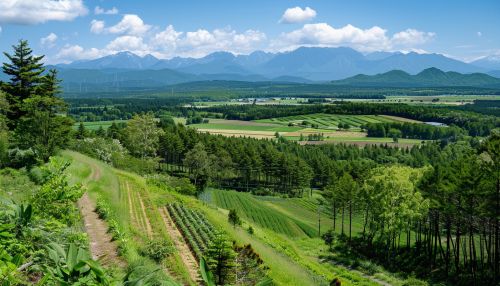Hokkaido Colonization Office
Introduction
The Hokkaido Colonization Office (北海道開拓使, Hokkaidō Kaitakushi) was an agency established by the Meiji government of Japan in 1869 to oversee the development and settlement of Hokkaido, the northernmost island of Japan. The office played a pivotal role in the modernization and economic development of the region, transforming it from a sparsely populated frontier into a vital part of Japan. This article delves into the history, objectives, activities, and impacts of the Hokkaido Colonization Office, providing a comprehensive analysis of its significance in Japanese history.
Historical Background
Establishment
The Hokkaido Colonization Office was established in the aftermath of the Meiji Restoration, a period marked by the rapid modernization and westernization of Japan. The Meiji government recognized the strategic importance of Hokkaido, both for its natural resources and its geographical position. The island was sparsely populated, primarily by the indigenous Ainu people, and the government aimed to integrate it more fully into the nation.
Objectives
The primary objectives of the Hokkaido Colonization Office were to:
- Promote the settlement of Japanese farmers and laborers in Hokkaido.
- Develop the island's agricultural, industrial, and infrastructural capabilities.
- Secure the northern borders of Japan against potential threats, particularly from Russia.
- Assimilate the Ainu population into Japanese society.
Activities and Achievements
Agricultural Development
One of the main focuses of the Hokkaido Colonization Office was agricultural development. The office introduced modern farming techniques and crops from the West, including wheat, potatoes, and dairy farming. American agricultural expert Horace Capron was invited to advise on the development of Hokkaido's agriculture. His recommendations led to significant improvements in productivity and the establishment of experimental farms.
Industrialization
The office also played a crucial role in the industrialization of Hokkaido. It established coal mines, ironworks, and other industries to exploit the island's rich natural resources. The development of the Horonai Coal Mine and the Muroran Ironworks were particularly notable achievements. These industries provided employment opportunities and contributed to the economic growth of the region.
Infrastructure Development
Infrastructure development was another key area of focus. The Hokkaido Colonization Office oversaw the construction of roads, ports, and railways to facilitate the movement of people and goods. The Hakodate Main Line, one of the earliest railways in Hokkaido, was constructed under the office's supervision. This infrastructure development was essential for the integration of Hokkaido into the national economy.
Education and Assimilation
The office also implemented policies aimed at assimilating the Ainu population and educating the settlers. Schools were established to provide education in Japanese language and culture. The Ainu were encouraged to adopt Japanese customs and practices, although these assimilation policies were often coercive and led to the erosion of Ainu culture and identity.
Challenges and Controversies
Resistance and Conflict
The activities of the Hokkaido Colonization Office were not without resistance and conflict. The Ainu people, who had lived on the island for centuries, resisted the encroachment on their lands and the imposition of Japanese culture. This resistance sometimes led to violent confrontations. The office's policies were also criticized for their coercive nature and the negative impact on Ainu society.
Economic Difficulties
The ambitious projects undertaken by the Hokkaido Colonization Office required significant financial resources. The office faced economic difficulties, particularly during periods of economic downturn. The high costs of infrastructure and industrial development strained the government's budget, leading to financial challenges.
Legacy and Impact
Economic Growth
Despite the challenges, the Hokkaido Colonization Office succeeded in transforming Hokkaido into a vital part of Japan's economy. The agricultural and industrial developments initiated by the office laid the foundation for the region's economic growth. Hokkaido became a major producer of agricultural products and natural resources, contributing to the overall prosperity of Japan.
Cultural Assimilation
The office's policies of cultural assimilation had a lasting impact on the Ainu population. While these policies led to the erosion of traditional Ainu culture, they also facilitated the integration of Hokkaido into the Japanese nation. The legacy of these policies is complex, with ongoing efforts to preserve and revitalize Ainu culture and identity.
Modern Hokkaido
The legacy of the Hokkaido Colonization Office is evident in modern Hokkaido. The region's infrastructure, industries, and agricultural practices can be traced back to the office's initiatives. Hokkaido remains an important part of Japan, known for its natural beauty, agricultural products, and industrial output.


